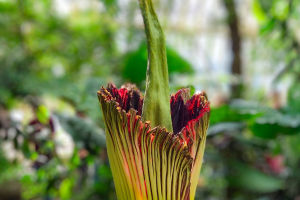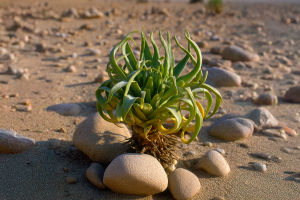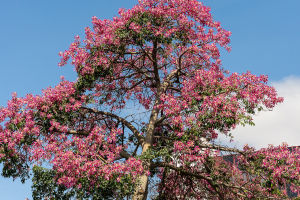Have you ever spotted a soft, fluffy flower dancing in the spring breeze and thought, “Wow, that looks like something from a fairy tale?”
Well, chances are, you've just met the charming Pulsatilla — a gentle and magical-looking flower that's way more fascinating than it first appears.
Today, we're diving into the lovely world of Pulsatilla, also known as the pasqueflower. From its fuzzy petals to its special personality in the garden, let's find out why this flower deserves a spotlight in our homes and hearts.
Meet the Pulsatilla
Pulsatilla isn't your average flower. It's part of the buttercup family, and what makes it stand out is its dreamy appearance. The flower blooms early in spring, sometimes even before the last snow melts. We usually see them in shades of purple, pink, white, or soft blue — and here's the cute part — they're covered in silky little hairs that make them look like they're wearing tiny fuzzy pajamas.
The name “pasqueflower” comes from the word Pasque because that's when it usually blooms. It's like the flower is saying, “Hey spring, we're ready!”
Why We Love It in the Garden
We know some flowers are showy, some are low-key. Pulsatilla is a perfect mix of both. It's not loud or overwhelming, but it definitely catches your eye with its unique texture and soft glow in the morning sun.
We love planting Pulsatilla in rock gardens, borders, or sunny corners of the yard. It doesn't like being moved around too much, so once we find the right spot, let it settle there and bloom year after year. It also attracts bees — which makes it a little buzzing hero in the garden.
The Fluffy Surprise: Seed Heads
Now here's a twist! After the flowers fade, Pulsatilla turns into something even more fascinating — it grows these wild, fluffy seed heads that look like tangled fairy hair. They spin and shimmer in the wind and make the whole garden look like it belongs in a storybook.
We've had visitors walk into the garden and ask, “What is that magical puffball?” And yup — it's still the same Pulsatilla, just showing off its second act.
How to Grow Pulsatilla (It's Easier Than You Think!)
If we're thinking about adding Pulsatilla to our garden, here's the good news: it's not high-maintenance at all.
• Sunlight: It loves sunlight. The more sun, the happier it blooms.
• Soil: Well-drained soil is the key. Think light and sandy — no soggy feet!
• Watering: It likes it on the dry side. So we don't need to water every day.
• Patience: It might take a season or two to really settle in, but after that? It's a loyal bloomer.
And yes — it can also grow from seeds, but that does take a bit of time. If we're up for a little gardening patience, the reward is definitely worth it.
Surprising Uses and Meaning
Pulsatilla isn't just pretty — it's got a bit of personality too. In traditional flower language, Pulsatilla stands for calmness, grace, and quiet strength. It's like that friend who doesn't speak often, but when they do, everyone listens.
Some cultures see it as a symbol of new beginnings because of its early spring bloom. And honestly, with how gentle and brave this little flower is, we can totally see why.
Perfect Pairings for Your Garden
Want to give your Pulsatilla some beautiful neighbors? Here are some flower friends it gets along with:
• Snowdrops and Crocuses – Early bloomers that pop up around the same time.
• Primroses – Soft colors that blend well with Pulsatilla's tones.
• Small grasses or low-growing herbs – They make the fluffy seed heads stand out more.
Together, these plants create a gentle, relaxing vibe in our garden that feels like a peaceful walk in the countryside.
Let's Get Growing!
Lykkers, if you're thinking about adding something magical, low-fuss, and sweet to your garden or balcony pots, Pulsatilla is definitely worth a try. It's the kind of flower that surprises us twice — once when it blooms with fuzzy petals, and again when it turns into a silky seed cloud.
Have you ever spotted Pulsatilla before? Or maybe you've already grown it? We'd love to hear your garden stories or even see your flower photos!
Let's make our gardens a little softer, a little calmer, and a lot more magical — one fluffy flower at a time.


